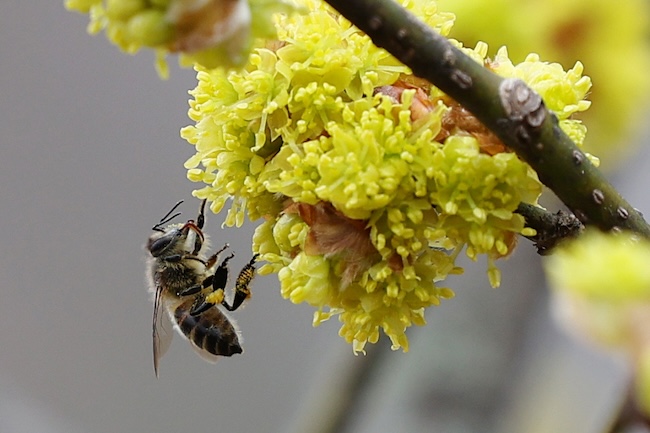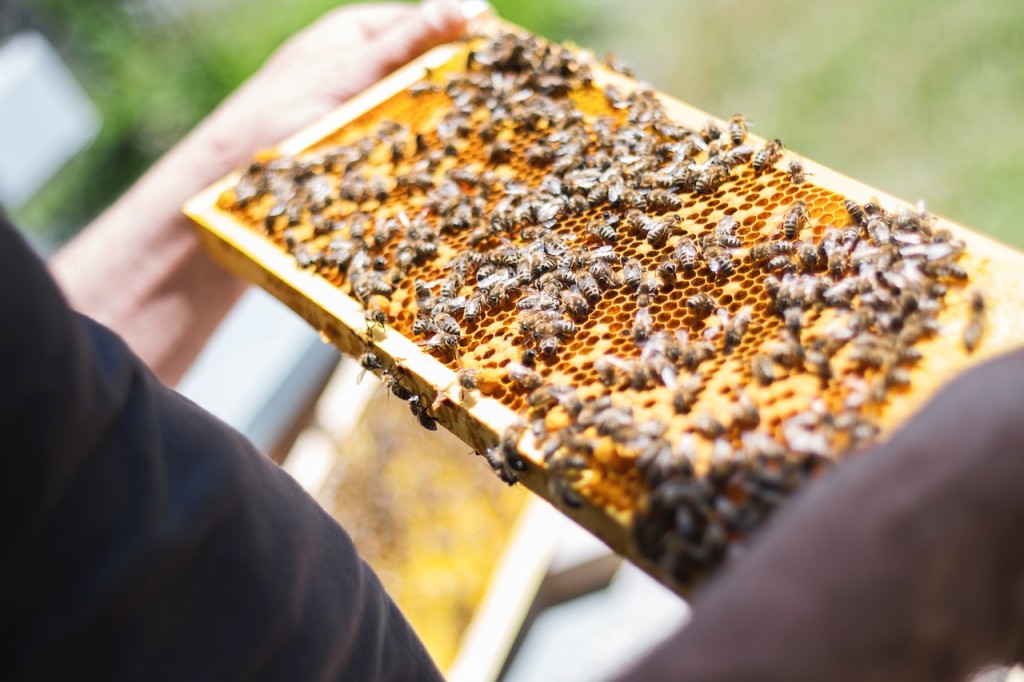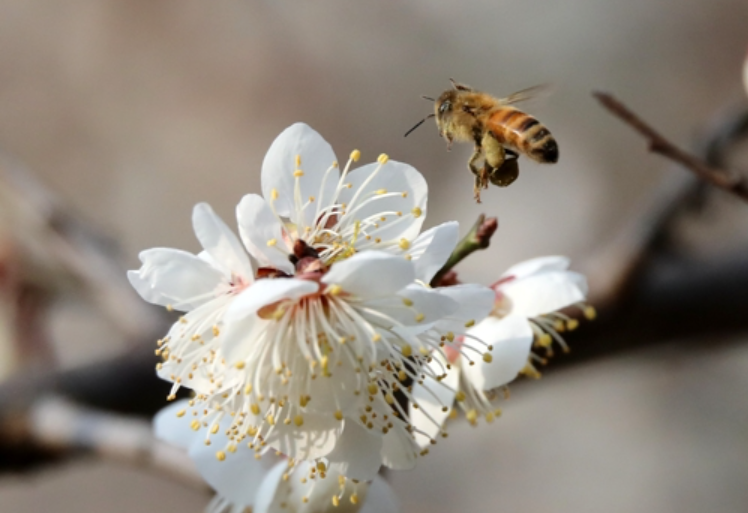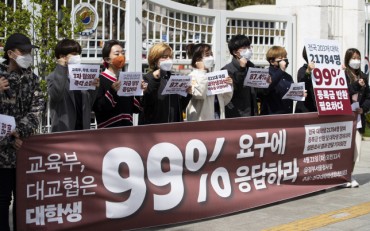
Close to 8 billion bees disappeared or perished nationwide during the fall of 2022 alone. (Image courtesy of Yonhap)
SEOUL, May 21 (Korea Bizwire) – In the heart of Seoul, a rooftop garden has become an oasis for a thriving colony of bees, their gentle buzzing filling the air as they flit from flower to flower.
But elsewhere in the city, and in urban centers around the globe, a worrying phenomenon is unfolding: honeybees are going missing in alarming numbers, disappearing without a trace.
On a recent morning, Park Chan, the director of Urban Bees Seoul, surveyed the rooftop garden with a sense of purpose. “Today, I’ve purchased around 200,000 won worth of nectar-rich plants,” he said, gesturing to the vibrant marigolds and chrysanthemums that had been carefully planted to nourish the bees.
Park was one of 13 individuals gathered on the hotel rooftop that day, all united in their efforts to combat the vanishing bee crisis that has plagued cities in recent years. As urban development encroaches on natural habitats, bees are increasingly struggling to find their way back to their hives, often perishing in the process.
“As bees pollinate more flowers, they attract other insects and small birds, creating a ripple effect that helps maintain and amplify the green spaces within our cities,” explained Jeong Ji-eun, 48, who sustained a minor bee sting while planting flowers.
With a wry smile, she quipped, “This is the fourth time I’ve become a flower while gardening.”
After spending an hour and a half tending to the rooftop garden, the group reflected on the urban beekeeping training they had received from Park over the past three months, which included hands-on experience in managing hives.

In South Korea, the economic contribution of bees to the nation’s agriculture is a staggering KRW 6 trillion, particularly impacting 16 key fruit and vegetable crops. In 2008, the country maintained an impressive 1.9 million hives, ranking 11th globally, and yielded 27,000 tons of honey, placing it 15th in worldwide production. These figures underscore the critical role bees play in sustaining the nation’s agricultural output and economic stability. (Image: Pixabay/CCL)
Urban Bees Seoul, which oversees approximately 100,000 bees at the hotel alone, has expanded its operations to over 20 locations since its inception in 2016.
“Bees thrive in warm, dry environments,” Park explained, “and our goal is to create hospitable conditions where they can flourish, with the help of our dedicated participants.”
Yet despite these efforts, the vanishing bee phenomenon remains an ongoing crisis, one that has persisted for three years and counting. According to statistics released by the Ministry of Agriculture, Food and Rural Affairs in February 2023, close to 8 billion bees disappeared or perished nationwide during the fall of 2022 alone.
The situation is particularly dire for urban beekeepers, with the Korea Beekeeping Association reporting a 53% decline in overwintering bee colonies between January and March 2023, compared to pre-winter levels.
Experts warn that the issue is complex, with multiple factors contributing to the bees’ plight. Climate change, driven by human activities and the burning of fossil fuels, is undoubtedly a major culprit, as rising temperatures and air pollution have made urban environments increasingly inhospitable for these delicate pollinators.

the vanishing bee phenomenon remains an ongoing crisis, one that has persisted for three years and counting. According to statistics released by the Ministry of Agriculture, Food and Rural Affairs in February 2023, close to 8 billion bees disappeared or perished nationwide during the fall of 2022 alone. (Image: Pixabay/CCL)
“While bees prefer warm, dry conditions, our experiments have shown that they are particularly vulnerable to extreme heat,” explained Jeong Su-jong, a professor at Seoul National University’s Graduate School of Environmental Studies.
“As we burn more coal and other fossil fuels, greenhouse gas emissions lead to increases in fine particulate matter, which can be detrimental to bee health.”
Electromagnetic radiation from cell phone towers is also believed to play a role, disrupting the bees’ ability to navigate and find their way back to their hives.
“Some scholars suggest that the proliferation of cell towers has caused bees to lose their way for up to three or four days, ultimately perishing when night temperatures drop,” said Park Hyun-chul, a professor at Pusan National University.
But the threats don’t end there. Varroa mites, a parasitic pest that has developed resistance to pesticides, have evolved into a formidable predator of honeybees, and bees are also susceptible to hornets, particularly the aggressive Asian giant hornet.
As the crisis deepens, academics and beekeepers alike emphasize the need for a multifaceted approach to safeguarding urban bee populations. Environmental stewardship, through measures like planting pollinator-friendly gardens and maintaining cleanliness around hives, is crucial, as is a concerted effort to reduce reliance on fossil fuels.
“We need to go back to a more sustainable way of life, akin to the 1930s,” Park Hyun-chul urged.
“The process of manufacturing green energy solutions like solar panels and electric vehicles still relies on fossil fuels, ultimately harming both humans and bees in the long run. Reducing consumption is key.”
Seoul’s city government is not standing still, recently announcing a ban on the use of a controversial class of insecticides known for their harmful effects on honeybees, with the city committing to sourcing lower-toxicity products instead.
Nonetheless, the consequences of further inaction are dire, with far-reaching implications for global food security.
“Seventy-five percent of the plants humans consume are flowering plants that rely on bees or other insects for pollination,” Park warned.
“If bee populations continue to decline, we could find ourselves in a situation reminiscent of the movie ‘Interstellar,’ where the only crop left is corn – a grim reality that could unfold within the next 30 to 40 years.”
M. H. Lee (mhlee@koreabizwire.com)







